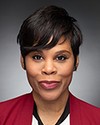Thank you for your question, Ms. Sidhu.
It is such an important one. It is about early intervention.
Young people these days are bombarded by social media. They face so many issues at school in their spaces, so it's about meeting them where they are.
First and foremost, I want to put a spotlight on Kids Help Phone. Why don't we start there? When I say meeting kids where they are, the $14.8 million that was provided to Kids Help Phone meant that kids could text. This is what they do. They could get in touch. They can pick up the phone wherever they are.
When we talk about the intersectionality of this—racialized, indigenous, Black—we need to know that help has to be available 24 hours a day. Kids Help Phone does that. Crisis help lines do that. Why is that important? Because, if they are faced with an abuser within their household or in the space that they're in, they can send a text. They are able to call—I've seen the numbers—in the middle of the night when there's availability 24 hours a day to get the help they need.
I will add one more thing on an intersectional lens and the 2SLGBTQ community. About a year ago, I met with Berkha Gupta. They operate the LGBTQ youth line. It's a hotline. Berkha wanted to be what they didn't have because, when she was no longer welcome in her family, she didn't really have a place to reach out. She created this youth line so that young people could call. They were part of the $20-million capacity funding. They were able to use that funding to expand to rural and other places outside of the urban areas in this country. When you talk about intersectionality, Berkha is on the front line. They hear it all. They have trauma-informed crisis counsellors on those lines to help everybody who calls in, whenever they might call or text.

